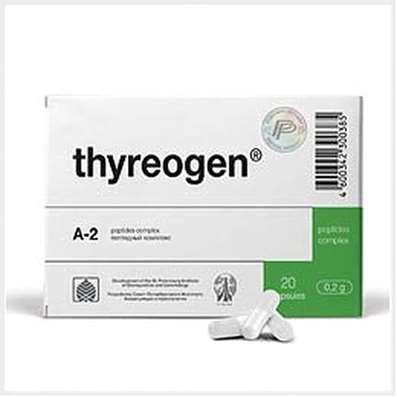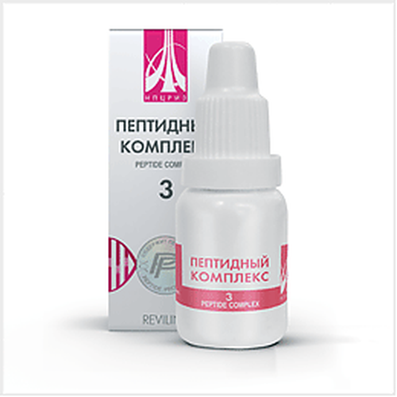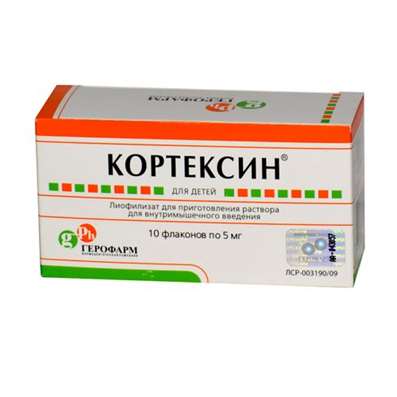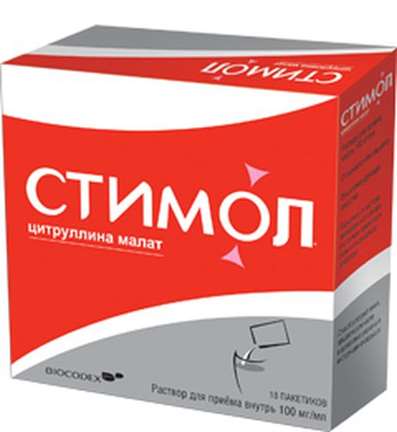Instruction for use: Suprastinex
I want this, give me price
Dosage form: Film-coated tablets; Drops for ingestion
Active substance: Levocetirizinum*
ATX
R06AE09 Levocetirizine
Pharmacological groups:
Antiallergic agent - H1-histamine receptor blocker [H1-antihistamines]
The nosological classification (ICD-10)
H10.1 Acute atopic conjunctivitis: Allergic conjunctivitis; Allergic eye diseases; Allergic conjunctivitis; Allergic conjunctivitis caused by chemical and physical factors; Allergic rhinoconjunctivitis; Allergic inflammation of the eyes; Spring Qatar; Spring keratitis; Spring conjunctivitis; Conjunctivitis allergic; Year-round allergic conjunctivitis; Exacerbation of pollinosis in the form of rhinoconjunctival syndrome; Acute allergic keratoconjunctivitis; Acute allergic conjunctivitis; Superficial bacterial infection of the eyes; Rhinoconjunctivitis; Seasonal allergic conjunctivitis; Seasonal conjunctivitis; SENSORY; Chronic allergic keratoconjunctivitis; Chronic allergic conjunctivitis
J00 Acute nasopharyngitis [rhinitis]: Viral rhinitis;Inflammation of the nasopharynx; Inflammatory Nose Disease; Purulent rhinitis; Nasal congestion; Nasal congestion due to cold and flu; Difficulty with nasal breathing; Difficulty with nasal breathing for colds; Difficult nasal breathing; Difficult nasal breathing for colds; Nasal hypersecretion; Coryza; ARI with phenomena of rhinitis; Acute rhinitis; Acute rhinitis of various origins; Acute rhinitis with thick purulent-mucous exudate; Acute rhinopharyngitis; Edema of the mucous membrane of the nasopharynx; Rhinitis; Rhinorrhea; Infectious-inflammatory disease of ENT organs;Severe cold; Rhinopharyngitis
J30 Vasomotor and allergic rhinitis: Allergic rhinopathy; Allergic rhinosinusopathy; Allergic diseases of the upper respiratory tract; Allergic rhinitis; Allergic rhinitis seasonal; Vasomotor runny nose; Prolonged allergic rhinitis; All-year-round allergic rhinitis; All-year allergic rhinitis; Year-round or seasonal allergic rhinitis; All-the-year-round rhinitis of an allergic nature; Rhinitis vasomotor allergic; Exacerbation of pollinosis in the form of rhinoconjunctival syndrome; Acute allergic rhinitis; Edema of the nasal mucosa; Edema of the nasal mucosa; Edema of the mucous membrane of the nasal cavity; Swelling of the nasal mucosa; Swelling of the nasal mucosa; Pollinosis; Permanent allergic rhinitis; Rhinoconjunctivitis; Rhinosinusitis; Rhinosinusopathy; Seasonal allergic rhinitis; Seasonal allergic rhinitis; Hay rhinitis; Chronic allergic rhinitis; Allergic diseases of the respiratory tract
J30.1 Allergic rhinitis caused by pollen of plants: Hay fever; Hay fungus; hay fever; Hypersensitivity to pollen of plants; Polyposis allergic rhinosinusitis; Seasonal pollinosis; Seasonal rhinitis
L20 Atopic dermatitis: Allergic diseases of the skin; Allergic skin disease noninfectious etiology; Allergic skin disease etiology nemikrobnoy; Allergic skin diseases; Allergic skin lesions; Allergic reactions on the skin; atopic dermatitis; Allergic dermatosis; Allergic diathesis; Allergic itching dermatosis; Allergic skin disease; Allergic skin irritation; allergic Dermatitis; atopic Dermatitis; allergic dermatoses; exudative diathesis; Itchy atopic eczema Itchy allergic dermatosis; Allergic skin disease; Cutaneous allergic reaction to drugs and chemicals; Cutaneous reactions to medications; Skin and allergic disease; Acute eczema; common neurodermatitis; Chronic atopic dermatitis; Exudative diathesis
L29 Itching: Itching with partial obstruction of the biliary tract; Dermatitis itchy; Dermatosis with persistent itching; Other itching dermatoses; Itching dermatoses; Itching allergic dermatosis; Itching dermatitis; Itching dermatosis; Itching itch; Excruciating itching; Severe itching; Endogenous itching; Skin itching with dermatosis; Restricted itchy dermatitis; Itching of the skin; Itchy scalp; Itching eczema
L29.9 Itching, unspecified: Itching eczema; Severe itching; Dermal itching caused by venous insufficiency; Itchy scalp; Prurit
L30 Other dermatitis: Non-aboriginal dermatitis
L50 Urticaria: Idiopathic chronic urticarial; Injury Urticaria; Chronic urticarial; Hives of the newborn
L50.1 Idiopathic urticaria: Idiopathic urticarial; Chronic idiopathic urticaria
R06.7 Sneezing: Sneezing
T78.3 Angioedema: Edema Quincke; Laryngeal exacerbation with angioneurotic edema; Recurrent angioedema; Allergic edema; Recurrent swelling of Quincy
Composition
Tablets covered with a film coating.
active substance: Levocetirizine dihydrochloride 5 mg
(Equivalent to 4.21 mg of levocetirizine)
Auxiliary substances: cellulose silicon microcrystalline Prosolv® HD90 (MCC - 98%, silicon dioxide colloidal anhydrous - 2%) - 40.4 mg; Lactose monohydrate - 37.9 mg; Giprolose low-substituted (L-HPC11) - 10 mg; Magnesium stearate 1.7 mg
Shell: Opadry II 33G28523 white (hypromellose 2910-40%, titanium dioxide 25%, lactose monohydrate 21%, macrogol 3350-8%, triacetin 6%) 5 mg
Drops for intake 1 fl.
active substance: Levocetirizine dihydrochloride 0.1 g
(In 1 ml of the solution contains 5 mg of levocetirizine dihydrochloride)
Auxiliary substances: glycerol (85%) - 5 g; Propylene glycol 7 g; Sodium saccharinate - 0.2 g; Sodium acetate trihydrate - 0.12 g; Methyl parahydroxybenzoate 0.027 g; Propyl parahydroxybenzoate 0.003 g; Glacial acetic acid 0.01 g; Purified water - up to 20 ml
Description of dosage form
Film coated tablets: white or almost white round biconvex, covered with a film shell, without or almost no odor, with an engraved "E" on one side and "281" on the other.
Drops for ingestion: colorless or almost colorless liquid without sediment, with a faint smell of acetic acid.
Pharmachologic effect
Mode action - anti-allergic, antihistamine.
Pharmacodynamics
Enantiomer of cetirizine; A competitive histamine antagonist; Blocks H1-histamine receptors, affinity for which is 2 times higher than that of cetirizine.
Has an effect on the histamine-dependent stage of allergic reactions; Reduces the migration of eosinophils, reduces vascular permeability, limits the release of inflammatory mediators.
Prevents development and facilitates the course of allergic reactions, has antiexudative, antipruritic effect; Practically does not have anticholinergic and antiserotonergic effects. In therapeutic doses, it practically does not have a sedative effect.
The action begins 12 minutes after a single dose in 50% of patients, after 1 hour - in 95% and lasts for 24 hours.
Pharmacokinetics
Pharmacokinetic parameters of levocetirizine vary linearly and practically do not differ from the pharmacokinetics of cetirizine.
Suction. After ingestion, the preparation is quickly and completely absorbed from the digestive tract. The intake of food does not affect the completeness of absorption, although its rate decreases. In adults, after a single dose of the drug in a therapeutic dose (5 mg), Cmax in the blood plasma is achieved after 0.9 hours and is 270 ng / ml, after repeated administration at a dose of 5 mg - 308 ng / ml. Css is achieved in 2 days.
Distribution. Levocetirizine binds to blood plasma proteins by 90%. Vd is 0.4 l / kg. Bioavailability reaches 100%.
Metabolism. In small amounts (<14%) is metabolized in the body by N- and O-dealkylation (unlike other antagonists of H1-histamine receptors, which are metabolized in the liver by the cytochrome system) to form a pharmacologically inactive metabolite. Because of the slight metabolism and the lack of a metabolic potential, the interaction of levocetirizine with other drugs is unlikely.
Excretion. In adults, T1 / 2 is (7.9 ± 1.9) h; In young children, T1 / 2 is shortened. In adults, the total clearance is 0.63 ml / min / kg. About 85.4% of the accepted dose of the drug is excreted by the kidneys in unchanged form by glomerular filtration and tubular secretion; About 12.9% - through the intestines.
In patients with renal insufficiency (Cl creatinine <40 ml / min) the clearance of the drug decreases, and T1 / 2 is prolonged (for example, in patients undergoing hemodialysis, the total clearance is reduced by 80%), which requires a corresponding change in the dosing regimen. Less than 10% of levocetirizine is removed during a standard 4-hour hemodialysis procedure.
Indications of the Suprastinex
Symptomatic treatment of the following conditions:
Year-round (persistent) and seasonal (intermittent) allergic rhinitis and conjunctivitis (itching, sneezing, rhinorrhea, lacrimation, congestion hyperemia);
Hay fever (hay fever);
Urticaria, incl. Chronic idiopathic urticaria;
Angioedema;
Allergic dermatosis, accompanied by itching and rashes.
Contraindications
Hypersensitivity to the active substance (including the piperazine derivatives) or any auxiliary component of the preparation;
Terminal stage of renal failure (Cl creatinine less than 10 ml / min);
Children under 6 years (for film-coated tablets) and up to 2 years (for drops for oral administration) - due to lack of clinical data;
Pregnancy and lactation (see "Application in pregnancy and lactation");
Lactose intolerance, hereditary lactase deficiency or glucose-galactose malabsorption syndrome - for tablets coated with a film coat (see "Special instructions").
With caution: chronic renal failure (
Application in pregnancy and lactation
Preclinical studies did not reveal any direct or indirect adverse effects of levocetirizine on the developing fetus, as well as on development in the postnatal period; The course of pregnancy and childbirth also did not change.
Adequate and strictly controlled clinical trials on the safety of the drug during pregnancy have not been conducted.
The use of the drug in pregnancy is contraindicated.
Levocetirizine is excreted in breast milk, so if it is necessary to use the drug in lactation it is recommended to stop breastfeeding.
Side effects
During clinical trials, in men and women 12-71 years old (≥1 / 100, <1/10), the following adverse events were observed: headache, drowsiness, dry mouth, fatigue; Infrequently (≥1 / 1000, <1/100) - there were asthenia and abdominal pain. In children from 6 to 12 years, often (≥1 / 100, <1/10) there was a headache and drowsiness.
During the post-marketing use of the drug, the following side effects were observed, the frequency of which is unknown due to insufficient data:
From the immune system: hypersensitivity reactions, including anaphylaxis. From the side of metabolism and eating disorders: increased appetite.
From the side of the psyche: anxiety, aggression, agitation, insomnia, hallucinations, depression, suicidal thoughts.
From the side of the nervous system: convulsions, thrombosis of the sinuses of the dura mater, paresthesia, dizziness, fainting, tremor, dysgeusia.
From the side of hearing: vertigo.
From the side of the organ of vision: visual impairment, indistinct visual perception, inflammatory manifestations.
From the CVS: palpitation, tachycardia, jugular vein thrombosis.
On the part of the respiratory system: dyspnea, increased symptoms of rhinitis.
From the digestive system: nausea, vomiting.
Hepatobiliary disorders: hepatitis, changes in functional liver samples.
From the kidneys and urinary system: dysuria, urine retention.
From the skin and soft tissues: angioedema, persistent drug erythema, rash, itching, urticaria, hypotrichosis, fissures, photosensitization.
From the musculoskeletal system: pain in the muscles.
General disorders: peripheral edema, weight gain.
Other: cross reactivity.
If any side effects indicated in the description are aggravated, or the patient has noticed other side effects, you should inform the doctor about it.
Interaction
The interaction of levocetirizine with other drugs has not been studied. In the study of the drug interaction of the racemate cetirizine with phenazone, pseudoephedrine, cimetidine, ketoconazole, erythromycin, azithromycin, glipizide and diazepam, no clinically relevant undesirable interactions have been identified.
With simultaneous appointment with theophylline (400 mg / day), the total clearance of cetirizine is reduced by 16% (theophylline kinetics does not change).
In a study with simultaneous administration of ritanovir (600 mg twice daily) and cetirizine (10 mg per day), it was shown that the exposure of cetirizine increased by 40%, and the exposure of ritanovir changed (-10%).
In a number of cases, with the simultaneous use of levocetirizine with alcohol or drugs that have an inhibitory effect on the central nervous system, it is possible to increase their effect on the central nervous system, although it has not been proven that the racemate of cetirizine potentiates the effect of alcohol.
The degree of absorption of levocetirizine does not decrease in the presence of food, but the rate of absorption decreases.
Dosing and Administration
Inside, with food or on an empty stomach, with a small amount of water, without chewing. To take the drug in the form of drops, you should use a teaspoon. If necessary, the dose of the drug can be diluted in a small amount of water immediately before use.
The daily dose is recommended at one time.
The recommended dose for adults and children over 6 years old, elderly patients (under the condition of normal kidney function) is 5 mg (1 table or 1 ml (20 drops from a dropper) per day.
The maximum daily dose should not exceed 5 mg
Children aged 2 to 6 years - the daily recommended dose is 2.5 mg (10 drops) for 2 doses in equal doses of 1.25 mg (2 times 0.25 ml drops or 2 drops of 5 drops from the dropper) .
The maximum daily dose should not exceed 2.5 mg.
Patients with impaired renal function. The frequency of admission should be set individually according to the function of the kidneys. In patients with CRF with Cl creatinine from 30 to 49 ml / min dose should be reduced by 2 times - 5 mg (1 table or 1 ml (20 drops) every other day, with Cl creatinine from 10 to 29 ml / min dose should be reduced In 3 times - 5 mg (1 table or 1 ml (20 drops) every 3 days.) At the terminal stage of renal failure (Cl creatinine less than 10 ml / min), the drug is contraindicated.
The creatinine clearance for men can be calculated from the serum creatinine concentration, according to the following formula: Cl creatinine, ml / min = (140 - age, years) × body weight, kg / 72 × Cl serum creatinine, mg / dL
Cl creatinine for women can be calculated by multiplying the obtained value by a factor of 0.85.
Patients with impaired hepatic function. When prescribing the drug to patients with an isolated impaired liver function, no changes in the dose are required. Patients with combined disorders of the liver and kidneys are recommended dose adjustment (see above Patients with impaired renal function).
Duration of the drug. Duration of admission depends on the disease.
In the treatment of persistent allergic rhinitis (symptoms <4 days / 1 week or less than 4 weeks), treatment is continued until the symptoms disappear; If symptoms appear, treatment can be resumed. In the treatment of seasonal (intermittent) allergic rhinitis (symptoms> 4 days / 1 week or longer than 4 weeks) treatment continues throughout the exposure period of allergens.
The course of treatment is determined by a doctor; On average, it is 1-6 weeks.
There is a clinical experience of using the drug for up to 6 months.
Overdose
Symptoms: adults show drowsiness, in children - excitement, anxiety, which are replaced by drowsiness.
Treatment: it is necessary to rinse the ventricles to take activated charcoal, if after taking the drug has passed a little time, and see a doctor. There is no specific antidote. Symptomatic and supportive therapy is recommended. Hemodialysis is ineffective.
Special instructions
During the treatment period it is recommended to refrain from using ethanol (see "Interaction").
The drug Suprastinex®, film-coated tablets, contains lactose, so it should not be administered to patients with lactose intolerance, hereditary lactase deficiency, or glucose-galactose malabsorption syndrome.
Suprastinex®, drops for ingestion, In patients with spinal cord injury, prostatic hyperplasia, and other predisposing factors to urinary retention, since levocetirizine may increase the risk of urinary retention.
Suprastinex® drops can cause allergic reactions (sometimes late), since they contain methyl parahydroxybenzoate and propyl parahydroxybenzoate.
The drug Suprastinex ® in drops is contraindicated in children under 2 years of age due to the lack of clinical data.
The drug should be administered with caution in chronic kidney failure, the elderly, while using the drug with alcohol (see "With caution").
Influence on the ability to drive vehicles and work with mechanisms. During the treatment period it is recommended to refrain from engaging in potentially dangerous activities that require an increased concentration of attention and speed of psychomotor reactions.
Release form
Tablets, film-coated, 5 mg. By 7 or 10 tab. In a blister of polyamide / aluminum foil / PVC / aluminum foil. 1 or 2 blisters (7 table) or 1, 2 or 3 blisters (10 tablets each) in a cardboard bundle.
Drops for oral administration, 5 mg / ml. 20 ml in a brown glass flask with a PE-dropper and a polypropylene lid with an internal PE layer provided with special protection from opening by children and controlling the first opening. 1 fl. In a cardboard box.
Manufacturer
CJSC "Pharmaceutical Plant EGIS". 1106, Budapest, st. Keresturi, 30-38, Hungary.
Representation of JSC "Pharmaceutical Plant EGIS" (Hungary) in Moscow
Conditions of leave from pharmacies
Without recipe.
Storage conditions of the drug Suprastinex
At a temperature not exceeding 30 ° C.
Keep out of the reach of children.
Shelf life of the drug Suprastinex
Tablets, film-coated 5 mg - 5 years.
Drops for oral administration 5 mg / ml - 4 years. The open vial should not be stored for more than 6 weeks.
Do not use after the expiry date printed on the package.

 Cart
Cart





